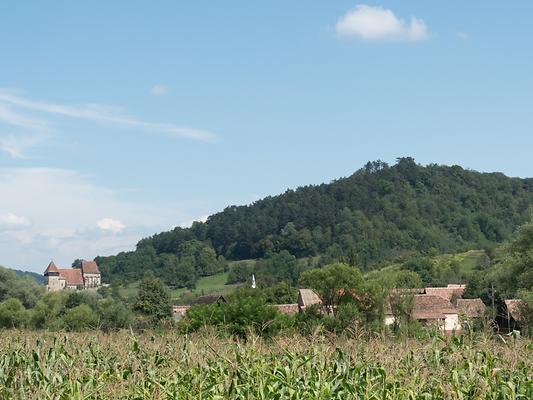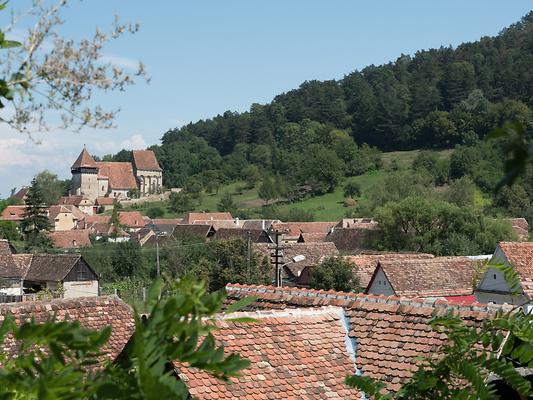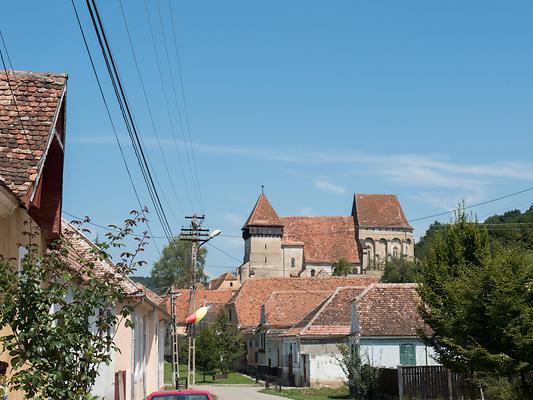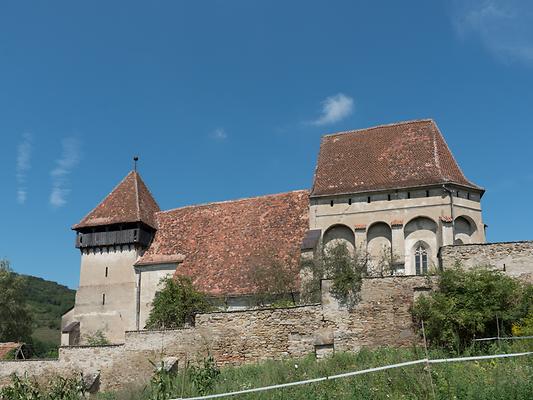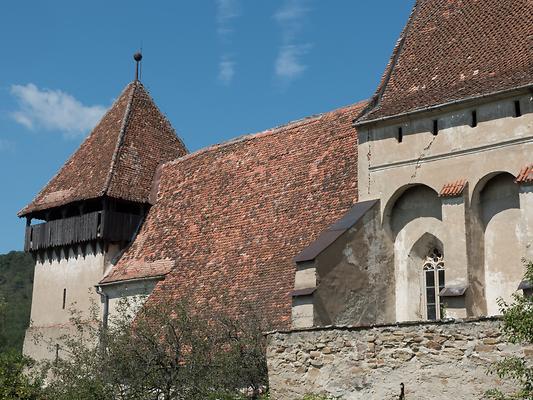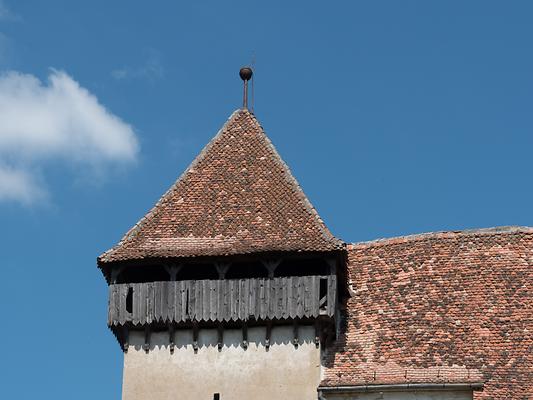Copșa Mare (Großkopisch)#
Copșa Mare ist ein Dorf im Kreis Sibiu (Hermannstadt) in Rumänien. Es gehört zur Gemeinde Biertan. Copșa Mare liegt etwa in der Mitte Siebenbürgens in einem südlichen Seitental der Târnava Mare (Große Kokel). Die nächsten größeren Städte sind Mediaș (etwa 15 km westlich) und Sighișoara (ca. 20 km nordöstlich). Der Ort wurde über Jahrhunderte von den Siebenbürger Sachsen geprägt. Noch im Jahr 1850 waren von 1218 Bewohnern 675 Deutsche. Deren Anzahl nahm durch Auswanderung nach Deutschland immer mehr ab. 1992 lebten in Copșa Mare noch 482 Personen, von denen sich 37 als deutsch, 372 als Rumänen, 53 als Zigeuner und 20 als Ungarn bezeichneten.Mehr zum Ort unter Copșa Mare.
- Der folgende Text und alle Bilder sind © Heimo Müller, Sommer 2016
In dem kleinen Ort Großkopisch (Copse Mare, Nagykapus) ist östlich des Dorfes die Kirchenburg aus dem 14. Jhd. zu finden. Die Kirchenburg wurde als gotische dreischiffige Pfeilerbasilika gebaut, im 16. Jhd. wurden die Seitenschiffe abgetragen, die Arkaden im Mittelschiff zugemauert, die Wände erhöht und mit Schießscharten versehen. Der Chor ist mit einem Wehrgeschoß überhöht und ragt 11 m über das Mittelschiff. Dieser Umstand verleiht der Kirchenburg die charakteristische Silhouette. [1]
[1] Hermann Fabiani, Die Kirchenburgen der Siebenbürger Sachsen, Monumenta Verlag, 2013, S. 195, 196
- The following text and all pictures are © Heimo Müller, summer 2016.
East of the small village of Copse Mare (Großkopisch, Nagykapus) you can find its fortified church from the 14th century. The fortified church was built as a Gothic three-aisled pillar basilica. In the 16th century, the flanking aisles were removed, the arcades in the central aisle blocked up and the walls were enlarged and equipped with arrowslits. The choir is enlarged by a defense floor and rises 11 m above the central aisle. This circumstance gives the fortified church its characteristic outline. [1]
[1] Hermann Fabiani, Die Kirchenburgen der Siebenbürger Sachsen, Monumenta Verlag, 2013, pp. 195, 196.
